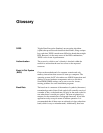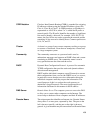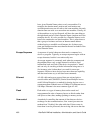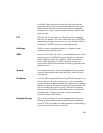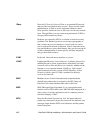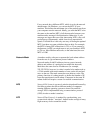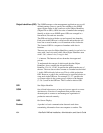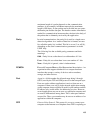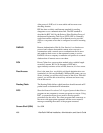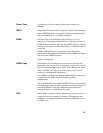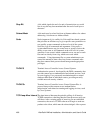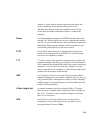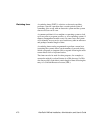463
Every network has a different MTU, which is set by the network
administrator. On Windows, you can set the MTU of your
machine. This defines the maximum size of the packets sent from
your computer onto the network. Ideally, you want the MTU to be
the same as the smallest MTU of all the networks between your
machine and a message's final destination. Otherwise, if your
messages are larger than one of the intervening MTUs, they will
get broken up (fragmented), which slows down transmission
speeds. Trial and error is the only sure way of finding the optimal
MTU, but there are some guidelines that can help. For example,
the MTU of many PPP connections is 576, so if you connect to
the Internet via PPP, you might want to set your machine's MTU
to 576 too. Most Ethernet networks, on the other hand, have an
MTU of 1500
Network Mask A number used by software to separate the local subnet address
from the rest of a given Internet protocol address
Network masks divide IP addresses into two parts (network
address and address of a particular host within the network).
Mask have the same form as IP addresses (for example,
255.255.255.0), however, its value is needed to be understood as
a 32-bit number with certain number of ones on the left end and
zeros as the rest. The mask cannot have an arbitrary value. The
primary function of a subnet mask is to define the number of IP
hosts that participate in an IP subnet. Computers in the same IP
subnet should not require a router for network communication.
NFS Network File System is a protocol suite developed and licensed by
Sun Microsystems that allows different makes of computers
running different operating systems to share files and disk
storage. NFS is implemented using a connectionless protocol
(UDP) in order to make it stateless.
NTP Network Time Protocol. A standard for synchronizing your
system clock with the ``true time'', defined as the average of many
high-accuracy clocks around the world.





